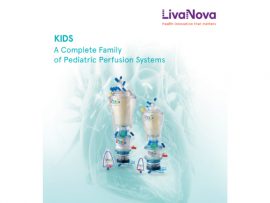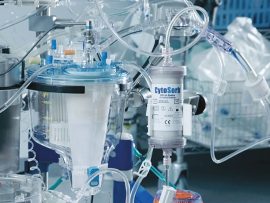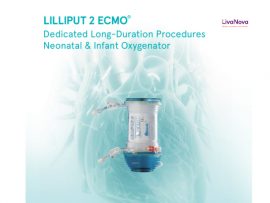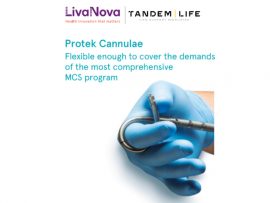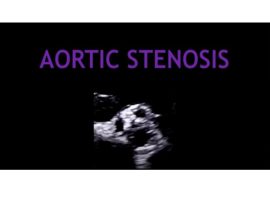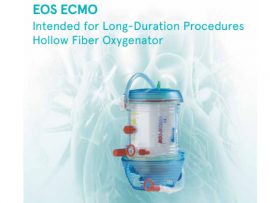Abstract Veno-arterial extracorporeal membrane oxygenation (VA-ECMO) is a powerful hemodynamic support strategy for patients with cardiogenic shock and out-of-hospital cardiac arrest (OHCA). Given that significant proportions of patients presenting with..
Read MoreAbstract Background During cardiopulmonary bypass (CPB), maintaining adequate oxygen consumption (VO2i) can only be achieved indirectly either by modifying oxygen delivery (DO2i) through its component parts or by modulating metabolic demand..
Read MoreAbstract Background The management of hemostasis in patients medicated with apixaban (Eliquis) undergoing emergency cardiac surgery is exceedingly difficult. The body’s natural elimination pathways for apixaban prove ineffective in emergency..
Read MoreAbstract Background The cardiac conduction system (CCS) creates and propagates electrical signals generating the heartbeat. This study aimed to assess the collagen content, vasculature, and innervation in the human sinoatrial..
Read MoreAbstract When technical requirements are high, and patient outcomes are critical, opportunities for monitoring and improving surgical skills via objective motion analysis feedback may be particularly beneficial. This narrative review..
Read MoreAbstract Background Coronary artery bypass grafting (CABG) is considered the choice treatment for patients suffering from coronary artery disease (CAD). In the inflammatory milieu of cardiopulmonary bypass (CPB), systemic inflammatory..
Read MoreAbstract Purpose: Venoarterial extracorporeal membrane oxygenation (V-A ECMO) can be used to support severely ill patients with cardiogenic shock. While age is commonly used in patient selection, little is known..
Read MoreAbstract Blood purification by dialysis is a nephrology cornerstone. However, despite its success, dialysis has not systematically moved to the treatment of other conditions, such as liver failure, intoxication with..
Read MoreAbstract BACKGROUND The effects of temporary mechanical circulatory support with a microaxial flow pump on mortality among patients with ST-segment elevation myocardial infarction (STEMI) complicated by cardiogenic shock remains unclear...
Read MoreAbstract Background Aortic aneurysms involving the proximal aortic arch, which require hemiarch-type repair, typically require circulatory arrest with antegrade cerebral perfusion. Left carotid antegrade cerebral perfusion (LCP) via distal arch..
Read MoreAbstract OBJECTIVE: To examine characteristics associated with formal ethics consultation (EC) referral in pediatric extracorporeal membrane oxygenation (ECMO) cases, and document ethical issues presented. DESIGN: Retrospective cohort study using mixed..
Read MoreAbstract Introduction: Intraoperative ultrafiltration (UF) is a procedure used during cardiopulmonary bypass (CPB) to reduce haemodilution and prevent excessive blood transfusion. However, the effect of UF volume on acute kidney injury..
Read MoreAbstract OBJECTIVES Dual-lumen cannulas for veno-venous (VV) extracorporeal membrane oxygenation (ECMO) support are typically inserted in the right internal jugular vein (RIJV), however some scenarios can make this venous route..
Read MoreAbstract Venoarterial extracorporeal membrane oxygenation (VA-ECMO) shunts venous blood to the systemic arterial circulation to provide end-organ perfusion while increasing afterload that may impede left ventricle (LV) ejection and impair..
Read MoreAbstract Background Reliable predictors of outcomes in venoarterial extracorporeal membrane oxygenation (VA-ECMO) therapy are limited. While elevated lactate levels over time have been linked to outcomes in cardiogenic shock (CS),..
Read MoreAbstract Bedside ultrasound represents a well-suited diagnostic and monitoring tool for patients on extracorporeal membrane oxygenation (ECMO) who may be too unstable for transport to other hospital areas for diagnostic..
Read MorePrinciples of the Aortic Stenosis Principios basicos de la estenosis aortica Echocardiographic assessment of aortic stenosis Evaluacion ecocardiografica de la estenosis aortica AORTIC STENOSIS (Echocardiographic assessment)..
Read MoreSignificant advancements in preservation techniques could liberate more hearts for transplantation. More than five decades after the first human-to-human heart transplant, over 5,000 heart transplants are performed annually worldwide. However,..
Read MoreAbstract We read with great interest the article by Zhang and colleagues : a single-center experience showing that although 48.8% of all extracorporeal membrane oxygenation (ECMO) patients are successfully decannulated..
Read MoreAbstract Objective Although (ECLS) has increasingly been used for the of patients with (CS), the outcomes of those successfully weaned from support remain poorly defined. Methods Of 510 venoarterial ECLS CS patients at..
Read MoreAbstract Background: Acute respiratory distress syndrome (ARDS) is often a consequence of a dysregulated immune response; therefore, immunomodulation by extracorporeal cytokine removal has been increasingly used as an adjuvant therapy, but..
Read MoreAbstract Aim: Optimal cannulation strategy for acute type A aortic dissection (ATAAD) surgery remains debated. Recent guidelines have advocated antegrade systemic perfusion through right axillary artery (RAX) cannulation, instead of femoral..
Read MoreAbstract Introduction By using a novel survey our study aimed to assess the challenges ECMO and Critical Care (CC) teams face when initiating and managing patient's ECMO support. Methods A..
Read MoreAbstract Background: The purpose of this investigation was to evaluate the impact of venoarterial extracorporeal membrane oxygenation (VA–ECMO) integrated hemoadsorption on the reversal of multiorgan and microcirculatory dysfunction, and early..
Read MoreAbstract Few data describe pediatric patients who receive massive transfusion for life-threatening hemorrhage (LTH) while on extracorporeal membrane oxygenation (ECMO). We present a retrospective secondary analysis of a multicenter prospective..
Read MoreAbstract Introduction: The organization of primary Extracorporeal membrane oxygenation (ECMO) transport is highly variable. Methods: To present the experience of the first mobile pediatric ECMO program in Spain, we designed a prospective..
Read MoreAbstract The utilization of temporary mechanical circulatory support (tMCS) has increased significantly over the last 40 years for stabilization of salvageable patients; however, there has not been much improvement in..
Read MoreAbstract Objective Professional standards recommend stopping cardiotomy suction at the termination of cardiopulmonary bypass before protamine administration based on perceived safety concerns. This study evaluated a multidisciplinary collaborative quality-improvement intervention..
Read MoreAbstract When determining extracorporeal oxygen transfer (VMLO2) during venovenous extracorporeal membrane oxygenation (VV ECMO) dissolved oxygen is often considered to play a subordinate role due to its poor solubility in..
Read MoreAbstract BACKGROUND: Cardiac surgery with cardiopulmonary bypass (CPB) is associated with hemolysis. Yet, there is no easily available and frequently measured marker to monitor this hemolysis. However, carboxyhemoglobin (CO-Hb), formed..
Read More

